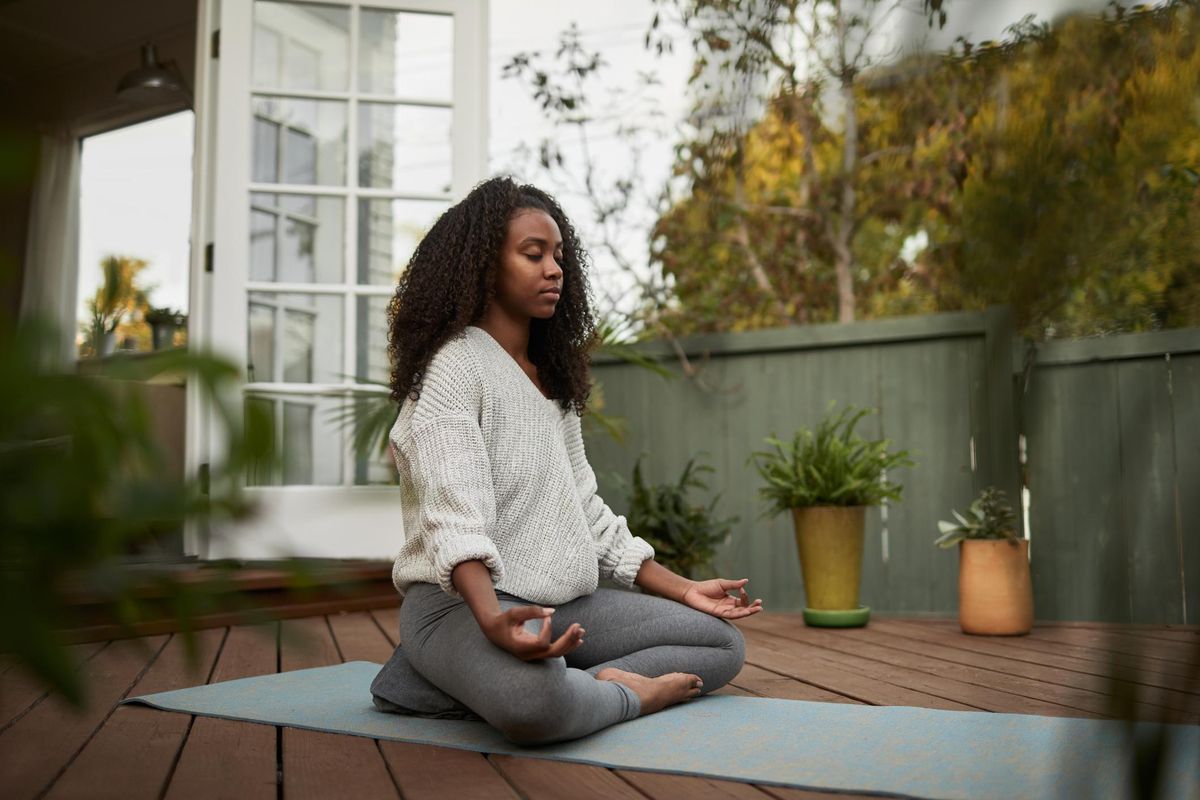Meditation can have big health benefits. Sitting alone in a quiet room might give you more than a peaceful moment to yourself. That pause in your day could also help you reduce stress, ease anxiety, lower blood pressure, improve immune function or lift your mood. Such health changes may be possible through meditation, a centuries-old spiritual practice that's gaining attention in the 21st century for tangible, not mystical, reasons.
Although science and spirit seem unlikely partners, Western medicine is increasingly considering the benefits of using meditation in conjunction with traditional drugs or other therapies to heal modern woes.
"A lot of hospitals have programs now as a complementary treatment for conditions," says researcher Kimberly Williams, PhD, assistant professor in community medicine at West Virginia University in Morgantown. Studies have found positive results for meditation's use to support treatment for both physical and psychological ills, she adds.
Yet meditation is no quick fix. It takes time to develop the technique, and you have to practice regularly.
What's more, there are different types of meditation. All share certain traits, such as taking a comfortable position, focusing attention and ignoring distractions. Among the various meditation approaches, the practice known as mindfulness meditation—sometimes simply called "mindfulness"—has emerged as the method gaining the most notice for helping to improve health.
Achieving mindfulness
When we think of meditation, many of us still envision people meditating while repetitively murmuring a word like "om." This mantra, or specific focus, is at the core of concentration meditations. In these modes, distractions are mentally pushed away.
In mindfulness, or insight meditation, meditators focus awareness on their present experience without judging or ignoring distractions. They note their breathing and physical sensations as well as random sounds, feelings and thoughts. "You just watch what arises...stay with it as long as it is there and let it go," Dr. Williams says. "The meditator can watch and keep that witnessing perspective."
Science doesn't yet know why this may provide health benefits, but it could be by creating changes in the nervous system and brain. By slowing down and taking a nonjudgmental view of your thoughts and feelings, proponents say, you become more aware and open, creating greater balance. Mindfulness builds your inner resources, allowing you to be calmer and more insightful when facing stress or difficulties.
In an eight-week mindfulness meditation training study conducted by Dr. Williams and her colleagues, participants who completed the course reported a 44 percent reduction in psychological distress and a 46 percent lowering of medical symptoms.
"Mindfulness helps you be more present with your life, so you can make conscious choices and engage in all of your experiences in a more meaningful way," says Shauna L. Shapiro, PhD, assistant professor of counseling psychology at Santa Clara University in Santa Clara, CA. "You're training your mind to be more present."
That sounds easier to do than it is, which is why it's helpful to learn mindfulness meditation from a teacher or counselor. But does using mindfulness to achieve a less-stressed life mean you have to change your religious beliefs? "It's not about adopting any doctrine," Dr. Williams says. "It's about learning the practice, having the experience."
Getting started
Developing a mindful approach through meditation often means fighting yourself. For mindfulness meditation to be effective, you need to take time out from your day's activities, unhook from the steady stream of technological interruptions and recognize that being great at multi-tasking in your personal and work life isn't necessarily wonderful for you all the time.
To begin mindfulness meditation, try these steps:
- State your purpose. Ask yourself why you want to practice mindfulness. Many people have a clear idea—they want to improve their sleep, lower stress, or solve a relationship issue. As you continue practicing, your intention may evolve, extending the mindful approach to other aspects of your life.
- Make a commitment, even a small one. Decide to give over 20 minutes each day for the next two months to practicing mindfulness meditation. "I ask people to see it as an experiment, not to be evaluating it every day as you go along," Dr. Shapiro says. "At the end of two months, you tell me if it was helpful. And, if not, let's find something else." Dr. Williams believes you can start with as little as five minutes, so long as you meditate at the same time every day. "Can you sit still and be aware of your breathing? Try not to miss a day," she advises. "In the morning, it sets your thermostat for calmness and vitality. In the evening, it lowers stress."
- Train your mind. Each day when you meditate, you will be training your mind to pay attention in an accepting way. "Start with your body and breath as an anchor in the moment," says Dr. Shapiro. "When the mind wanders off, we gently note where it went and come back to (awareness of) breath and body." Many people are surprised at how hard it is to pay attention. When you're not paying attention, you don't even feel your breath. "It's called 'monkey mind.' Your mind swings from one thought to another, like a monkey in trees," she adds. "What you're trying to do is cultivate the ability to pay attention," says Dr. Shapiro. "You know when you're mindful and when you're on automatic pilot. There's a qualitative difference."
- Extend your mindful actions. Mindfulness practice can't succeed if you compartmentalize it into one 5- or 20-minute session. Once you become comfortable with the practice, bring mindfulness into your daily life. Take time to appreciate the experience of simple actions, such as washing dishes, eating a meal or taking a walk. The more skilled you become at mindfulness meditation, the more seamless the transition becomes between your "official" mindfulness meditation and everyday experiences.
- Find a teacher. It helps to have guidance, as you would in a yoga or spinning class. One good measure is to look for a teacher trained in the mindfulness-based stress reduction (MBSR) techniques developed by Jon Kabat-Zinn, PhD, and colleagues at the University of Massachusetts Medical School, Center for Mindfulness in Medicine, Health Care, and Society. Hospitals with integrative medicine departments are also good resources for meditation programs and instructors.
If you're experiencing severe anxiety, depression or debilitating stress, consult with a mental health professional or other health care provider. Some are trained in MBSR and use mindfulness meditation along with talk therapy or medications.







